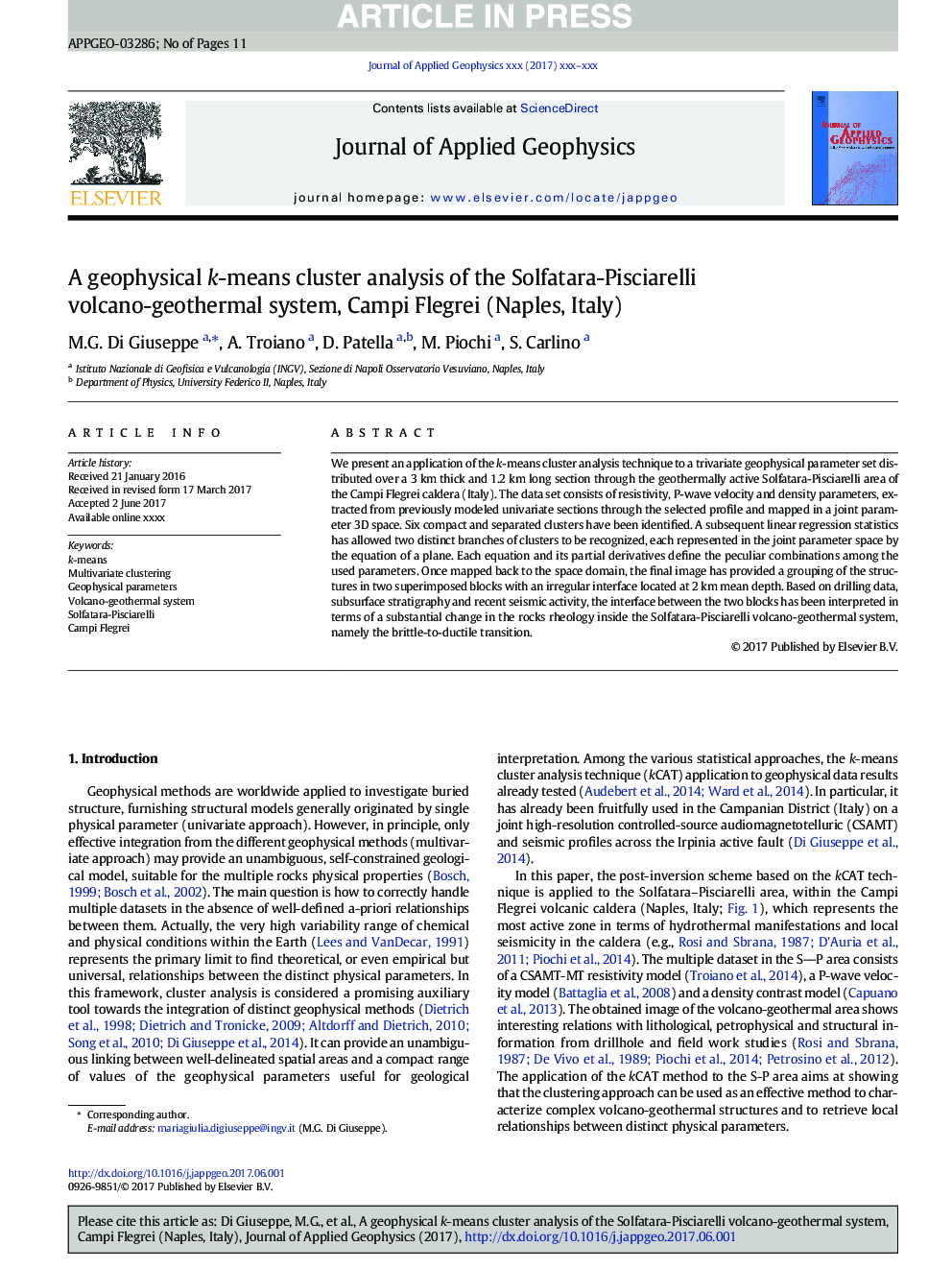| Article ID | Journal | Published Year | Pages | File Type |
|---|---|---|---|---|
| 8915307 | Journal of Applied Geophysics | 2018 | 11 Pages |
Abstract
We present an application of the k-means cluster analysis technique to a trivariate geophysical parameter set distributed over a 3Â km thick and 1.2Â km long section through the geothermally active Solfatara-Pisciarelli area of the Campi Flegrei caldera (Italy). The data set consists of resistivity, P-wave velocity and density parameters, extracted from previously modeled univariate sections through the selected profile and mapped in a joint parameter 3D space. Six compact and separated clusters have been identified. A subsequent linear regression statistics has allowed two distinct branches of clusters to be recognized, each represented in the joint parameter space by the equation of a plane. Each equation and its partial derivatives define the peculiar combinations among the used parameters. Once mapped back to the space domain, the final image has provided a grouping of the structures in two superimposed blocks with an irregular interface located at 2Â km mean depth. Based on drilling data, subsurface stratigraphy and recent seismic activity, the interface between the two blocks has been interpreted in terms of a substantial change in the rocks rheology inside the Solfatara-Pisciarelli volcano-geothermal system, namely the brittle-to-ductile transition.
Related Topics
Physical Sciences and Engineering
Earth and Planetary Sciences
Geophysics
Authors
M.G. Di Giuseppe, A. Troiano, D. Patella, M. Piochi, S. Carlino,
